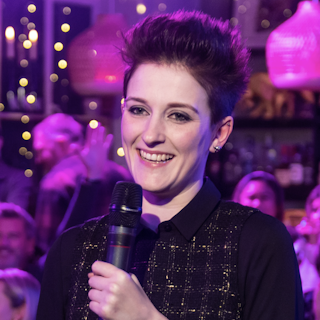How Nasa is reshaping video, influencers and taking on the world
Nasa is on a mission. The US Government owned corporation’s social media team is trying to find new ways of reaching new audiences who want to discover science, technology and space travel.
At one time, the only way you found out about any of this was to either open a book or turn on the TV. Now live streams of blood moons, 360° videos of rocket launches and wall to wall coverage of solar eclipses on social feeds are a common occurrence.
Streaming into the future
For Nasa’s deputy social media manger, Jason Townsend and his team, data is one of the biggest areas that they work in and are constantly analysing what's working and what’s not. For the past couple of years, they’ve also been retooling how they make video. Before, they would repurpose TV content that ran for seven to eight minutes. But now amidst the 720 social media accounts across 18 platforms that help maintain the community and find and connect people who have likeminded interests, Nasa has been playing with shorter videos, sometimes less than a minute on Instagram. “It can garner close to a million views for us on our main account”, says Townsend.
A post shared by NASA (@nasa) on
“This is great if we want to get a little nugget or factoid out to our audiences. We're looking at producing more serialised shows and have also had a great success with playlists on YouTube and building up audience around that,” he continues. Facebook Live videos are watched three times longer than videos that aren’t live. Nasa puts out live rocket launches onto five different platforms with YouTube, YouStream, Facebook Live, Periscope and Twitch TV. “We're broadcasting live to all of them,” explains Townsend. “Video has been an interesting one that we've had a lot of success with.” Organic pull As a government organisation, everything that the social media team produces is organic. “We’re not allowed to use tax payers’ dollars in order to promote or sponsor or put up any paid promotion of our content. We spend time working on creatively written posts and analysing the data and optimising everything.” They also don’t pay for influencer work. Since 2008, Nasa Socials, a program designed to provide opportunities for Nasa' social media followers, allows the public to learn and share information about missions, people, and programs.
“We invite our social media followers and if you show up at our gate at the stated date and time, we will give you a tour, access to some of our experts, you can ask questions of them, conduct interviews, grab footage, you can take your own photos etc and then share that back out with all your followers,” Townsend elucidates.
It's an exclusive behind the scenes access to things that are not normally open to the public which generates coverage for Nasa with over 7500 of its social media followers at 120+ of these events so far.
Taking on the world
As a highly technical and scientific organisation, making the content approachable to people is one of the things that they have to work really hard at. Someone who might have a PHD in astrophysics, may understand a science paper on the first read but a member of the public might not grasp all the concepts.
But what is interesting is that Nasa’s largest following comes from Instagram. Another platform that has been a large success is Snapchat stories allowing Nasa to engage with the next generation of explorers.
However, one area they didn’t expect to draw in an audience was Soundcloud. “There’s a very large audience that we have found for things that people don't expect to get from us. On Soundcloud we have a lot of space sounds from iconic mission clips all the way to rocket engine noises. Sometimes even the sounds of Saturn. Those connect with an audience that is very different from our other platforms. It all depends on what we are trying to accomplish and who we are trying to reach.”
The fight against fake
“We’ve seen the number of people questioning our content crop up within comments and we have taken some steps ourselves to help combat some of this,” says Townsend.
When they release posts/articles/videos that are artists illustrations/concepts and based on science data, they label the image with text in the corner that this is an artist illustration/concept. “It helps people differentiate a little better what is an actual data driven image versus what is something that is an artist concept,” Townsend clarifies. “It's going to take a lot of different approaches to help people understand what they are looking at and help them digest what is going on out there.”
Townsend was a judge for The Drum Social Buzz Awards 2018. These awards are open for 2019, make sure you enter before August 28 for a special discounted rate.
Sponsors of the awards are UGCA

